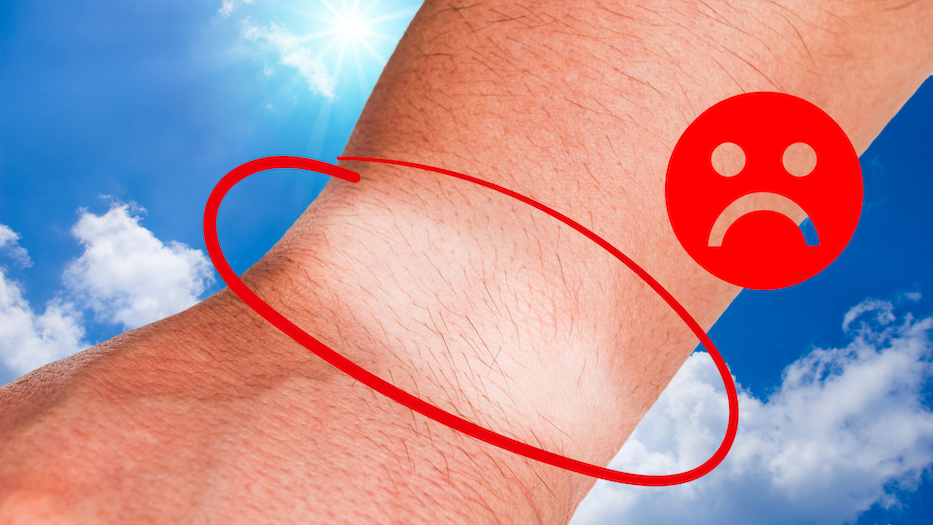By Chase Cowan
Skin cancer is the most common form of cancer in the United States, with an estimated one in five Americans developing it during their lifetime. According to the American Academy of Dermatology, nearly 9,500 people are diagnosed with skin cancer every day, with cases peaking in the summer months when sun exposure is at its highest.
The sun’s ultraviolet (UV) rays are the primary cause of skin cancer. There are two types of UV rays that impact our skin. UVA and UVB. UVA rays penetrate deeper into the skin and are the main cause for premature aging, such as wrinkles and sunspots. UVB rays, on the other hand, are the main culprit behind sunburns and can damage the DNA in skin cells, leading to skin cancer.
The most common forms of skin cancer are basal cell carcinoma (BCC), squamous cell carcinoma (SCC), and melanoma. BCC and SCC are generally less deadly but can cause lots of damage to the skin and surrounding tissue if left untreated. Melanoma is the deadliest form of skin cancer, known for spreading rapidly to other parts of the body if not caught early.
While it’s important to protect your skin year-round, the summer months are a challenge. During this time, people tend to spend more time outdoors, swimming, hiking, or just lying in the sun. Additionally, UV rays are stronger during the summer, especially in the middle of the day, between 10 a.m. and 4 p.m.
Even on cloudy or overcast days, up to 80% of UV rays can still reach your skin. This means that people don’t see the damage that they are doing, particularly when they don’t experience immediate symptoms like getting a sunburn.
“Many people believe that if they don’t get sunburned, they’re not at risk,” explains Dr. Emily Lawson, a dermatologist at the Mayo Clinic. “But even if you don’t burn, prolonged sun exposure still damages your skin and increases the likelihood of developing skin cancer later in life.”
Some ways to avoid skin damage are using sunscreen, trying to stay in the shade, wearing enough clothing, avoiding tanning beds, and checking skin regularly.
The most effective sunscreen is broad spectrum with SPF 30 or higher, which is essential for blocking both UVA and UVB rays. Make sure to reapply every two hours and more frequently if swimming or sweating. One thing to know when applying sunscreen is whether it contains Perfluoroalkyl and polyfluoroalkyl substances (PFAS) or non-PFAS. Although PFAS repels water, so it can be worn in the ocean or pool, it unfortunately sometimes builds up in the body, leading to certain types of cancer. The better technique is to wear non-PFAS sunscreen and reapply more often, to still get the benefits of skin protection without running the risk of cancer.
It is also important to look for places with shielding from the sun. Whenever possible, take breaks in the shade, especially during peak sun hours. If headed to the beach or pool, it is best to be sitting under an umbrella.
Another method to protect one’s skin against the sun is by wearing protective clothing. Hats with wide brims, sunglasses with UV protection, and lightweight, long-sleeved clothing can help shield your skin from dangerous sun rays. Make sure to look for clothing with UPF (Ultraviolet Protection Factor) for extra protection.
Sunglasses can help with eye protection. Extensive eye exposure in the sun can have dangerous consequences. According to the American Academy of Ophthalmology (AAO), sun damage to the eyes can cause eye cancer, cataracts, and growths on the eye. All of these can possibly lead to blindness. An easy way to avoid this is by wearing sunglasses, specifically those that are 100 percent UV protected or say UV400. This means that the glasses can block UV rays up to 400 nanometers, stopping both UVA and UVB rays, for complete protection.
Tanning beds may seem like a quick way to get a tan, but they expose your skin to dangerous UV rays and increase the risk of melanoma, particularly in young people.
If too much time is spent in the sun, it is very important to self check for skin abnormalities. Early detection is key in fighting skin cancer. Perform monthly self-exams to check for any new moles, growths, or changes in existing ones. If anything unusual is noticed, talk to a dermatologist.
“The message about sun safety needs to be especially clear for young people,” says Dr. Lawson. “We’re seeing more cases of melanoma in younger adults, which is alarming because melanoma can be more aggressive in this age group.”
Graphic by Ryder Navarra





